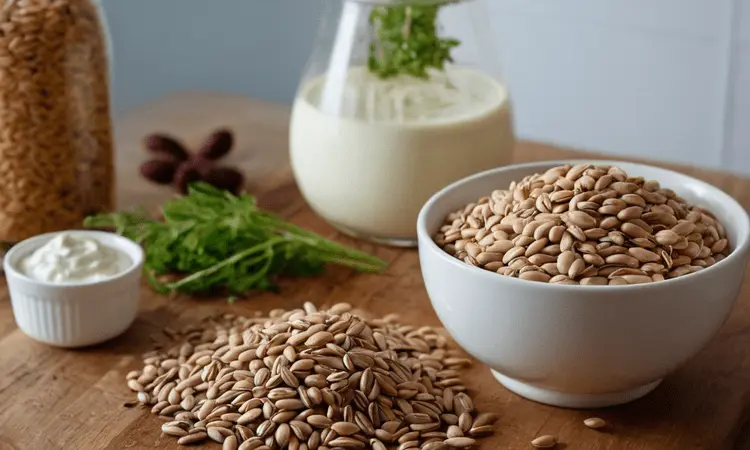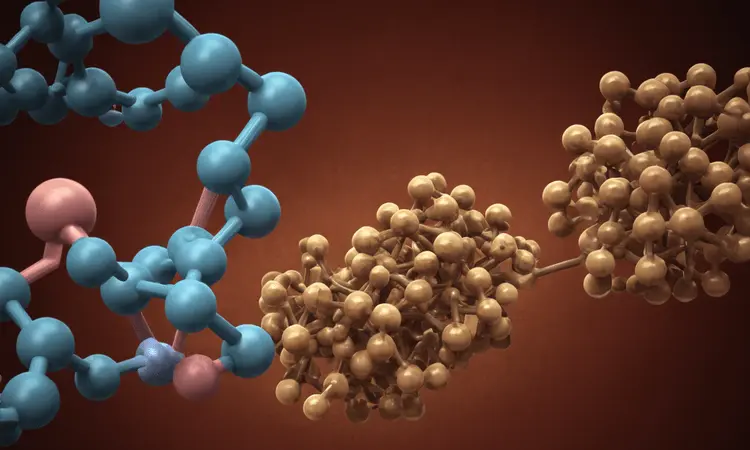Protein bioavailability could be the key to unlocking your fitness goals. You might be working hard, eating protein-rich foods, and still not seeing the results you expect. The issue? Not all protein is created equal.
It’s crucial to consider how readily your body can absorb and actually use the protein you consume.
Low protein bioavailability means less protein available for muscle building, recovery, and overall health. It’s frustrating to think your efforts might be going to waste!
Don’t worry, this guide is here to help! We’ll dive into protein absorption, protein quality, and bioavailable protein sources. Get ready to learn practical strategies to maximize your protein intake and finally unlock the fitness results you deserve.
Key Takeaways: Protein Bioavailability
- Protein quality matters
- Animal proteins generally best
- Combine plant-based proteins
- Consider food preparation
- Supplements can be helpful
Table of contents
Introduction

Understanding Protein Bioavailability: Why It Matters for Your Health and Fitness Goals
Think of protein as building blocks for your body. But, are all those blocks created equal? The answer is no, and that’s where protein bioavailability comes in.
It determines how much of the protein you eat actually gets used to build muscle, fuel your workouts, and optimize overall health.
What is Protein Bioavailability?
Protein bioavailability is how well your body can digest, absorb, and use a specific protein. Think of it like this: some high-protein foods deliver a larger percentage of their building blocks straight to your muscles, while others may not be as easily utilized.
Why Does it Matter?
Understanding protein bioavailability goes beyond just building muscle. Here’s why it should be on your radar:
- Muscle Growth & Recovery: If you’re hitting the gym hard, you want to make sure your protein is working for you.
- Immune Function: Proteins play a role in keeping your defenses strong.
- Healthy Aging: Adequate protein intake, especially from bioavailable sources, can support muscle maintenance as you age.
- Satiety: Protein can keep you feeling full, aiding in weight management.
Ready to maximize your protein intake? Let’s dive into the fascinating world of bioavailability and discover which protein sources truly pack a punch! Feel free to share your experiences optimizing protein choices in the comments below!
Measuring Protein Bioavailability
Think of protein bioavailability like a rating system for how well your body actually uses the protein you eat. Curious to know how scientists figure this out? Let’s dive in!
- PDCAAS: The Old Standard
Protein Digestibility Corrected Amino Acid Score (PDCAAS for short) has been the go-to method for a while. It measures protein quality based on amino acid needs and how easily your body digests it. - DIAAS: The New Kid on the Block The Digestible Indispensable Amino Acid Score (DIAAS) is gaining popularity. It’s more precise because it considers how each individual amino acid is digested.
- BV: Beyond the Scores Biological Value (BV) looks at how much protein your body actually retains. Eggs usually rank highest on this scale.
So, which score is best? Honestly, they all have pros and cons. It’s helpful to consider these scores along with other factors like these:
- Food Combinations: Pairing different protein sources can boost their overall bioavailability. Think beans and rice!
- Your Body: Gut health, age, and your overall diet impact how you use protein.
- Food Prep: Soaking, sprouting, or fermenting foods can alter their bioavailability.
Want to explore the amino acid profiles of your favorite foods? Check out this awesome Amino Acid Composition of Foods database.
And if you’re curious about how food processing impacts digestion, this Food processing effects on nutrition study has valuable insights.
ou know bioavailability matters, but did you know how your body actually uses protein? Dive deeper into the fascinating world of protein absorption and find out how to give your body the building blocks it needs. Get the full story here!
High Bioavailability Protein Sources
Animal-Based Proteins: Your Powerhouses
Think of these as your protein superstars! They’re packed with all the essential amino acids your body needs, and they’re readily absorbed. Here are the front-runners:
- Whey protein: The gold standard, especially whey isolate, for its rapid absorption. Looking to build muscle or bounce back after workouts? Whey protein fuels those results.
- Eggs: A true breakfast of champions. Eggs are not just delicious, they’re incredibly versatile and a complete protein source.
- Meat, poultry, and fish: These staples offer a range of essential nutrients beyond just protein. Aim for lean cuts and consider seafood for a healthy dose of omega-3 fatty acids.
Plant-Based Protein: The Underdogs with Potential
Don’t underestimate the power of plants! While they may not always have a complete amino acid profile on their own, combining them strategically makes them potent protein sources.
- Soy protein: A plant-based powerhouse that rivals animal protein in bioavailability. You’ll find it in many protein snacks and supplements, making it convenient on the go. Curious about how this compares to other sources? Check out an in-depth analysis on amino acid composition of foods.
- Pea protein: A popular hypoallergenic option growing in the spotlight.
- Other legumes, nuts, and seeds: Think lentils, beans, almonds, chia seeds… the list goes on! These provide valuable protein, plus healthy fats and fiber.
The Key to Unlocking Plant-Based Power
Is maximizing protein bioavailability from plants on your mind? The secret lies in combining different sources for a complete amino acid profile.
This isn’t complicated! Traditional dishes like beans and rice do this naturally. Want more recipe inspiration? Let’s swap ideas in the comments – or tag me on social media!
Remember: Don’t overlook lesser-known gems like spirulina and certain algae. They pack a surprising protein punch and boast high bioavailability.
Factors Affecting Protein Bioavailability

Think you’re getting all the protein your body needs just by checking food labels? Think again! How your body actually uses that protein depends on several factors beyond the number of grams listed.
Food Processing: The Double-Edged Sword
Cooking can make some proteins easier to digest, unlocking their full potential. But, over-processing or using harsh methods can damage the protein structure, making it harder for your body to break it down.
Is finding that balance between raw and cooked foods the key to optimizing protein bioavailability?
Anti-Nutrients: The Hidden Barriers
Plants have natural defense mechanisms called anti-nutrients (like phytates and tannins).
These can bind to protein, making it less available for your body to use. Soaking, sprouting, or fermenting can help reduce anti-nutrients, boosting protein bioavailability.
Supplements: Convenience vs. Complexity
Protein powders offer a quick fix but remember, they’re processed foods. Whole food sources often combine protein with other nutrients that enhance absorption. Is it worth prioritizing whole foods for better nutritional benefits along with protein bioavailability?
Your Amazing, Unique Body
Digestion, age, and your overall eating patterns all play a role in protein bioavailability. A diet rich in fiber and healthy gut bacteria supports better nutrient absorption overall. Additionally, how much protein you need, and how well you utilize it changes with age!
Let me know if you find those anti-nutrients sneaky – tag me on social media! Do you think your current diet optimizes protein bioavailability? Leave your comments below!
Enhancing Protein Utilization
Strategies to Maximize Your Protein Intake
Think you’re getting enough protein? It might not be as simple as just hitting your daily target number. How your body actually uses that protein is where protein bioavailability comes in. Let’s dive into some smart strategies to supercharge those protein gains!
- Mix and Match: Remember, variety is key! Pairing different plant-based protein sources can create a complete amino acid profile. Think classic combos like beans and rice, or hummus with whole-wheat pita. Is maximizing protein absorption your goal?
- Prep Power: Soaking, sprouting, or even fermenting those beans or lentils? Great idea! These methods can reduce anti-nutrients, making the protein more accessible for your body to put to work.
- Timing Matters: Spread your protein intake throughout the day. Instead of one massive protein dump at dinner, aim for smaller, protein-rich meals and snacks. This gives your body a steady supply for optimal use.
- Supplements: The Smart Way: If you’re considering a protein supplement, do your research and choose high-quality options with good bioavailability.
Conclusion

Putting Protein Bioavailability into Practice
Think about it: have you ever focused on how your body uses protein, not just how much you’re eating? Understanding protein bioavailability is your superpower for getting the most out of every bite!
So, here’s the key: It’s not just about the protein itself. Focus on whole foods, smart combinations, and be mindful of how you prepare your meals. These tactics naturally boost protein bioavailability.
Need some inspiration? Check out these guides on maximizing the nutritional value of plant-based proteins – they’re full of practical, delicious tips! And remember, food processing plays a role too.
Want to dive into the science behind it? There are fascinating studies on how food processing affects nutrients – you’ll be surprised by the results.
Let’s wrap this up with a challenge:
- Experiment: Try a new recipe with highly bioavailable protein.
- Observe: How does your body feel? Energy levels? Satisfaction?
- Share: Tag us on social media – let’s compare notes!
Getting the most from your protein doesn’t have to be complicated. Small changes make a big difference. Let’s get those gains, nourish our bodies, and feel our best!
Let me know if you have any more questions about protein bioavailability – I’m here to help!
Maximizing protein bioavailability is just one piece of the puzzle. Are you eating enough protein to reach your goals? Too much? Discover the answer and how to tailor your intake in ‘Protein Intake Recommendations: The Ultimate Guide.
Your Protein Bioavailability Questions Answered
Whey protein, particularly whey protein isolate, is generally considered the most bioavailable protein source. Egg protein is another excellent choice.
Protein bioavailability refers to how well your body can digest, absorb, and use the protein from a particular food source.
Choose high-quality sources: Focus on animal proteins and properly prepared plant-based proteins.
Combine plant-based proteins: Pair different plant sources to get a full range of amino acids.
Minimize anti-nutrients: Soak, sprout, and ferment beans, grains, and legumes.
Calculating protein bioavailability involves specialized scientific methods like the PDCAAS (Protein Digestibility Corrected Amino Acid Score) or DIAAS (Digestible Indispensable Amino Acid Score). These scores measure the amino acid profile and digestibility of a protein.
Plant-based proteins can be just as nutritious! The key is to combine different sources for a complete amino acid profile.
Lower bioavailability means your body absorbs less protein. This can impact muscle growth and overall health.
Most people can get enough protein from a balanced diet. Athletes or those with dietary restrictions may benefit from supplements.
Check online resources for protein quality rankings or databases listing amino acid profiles. Prioritize whole foods!
Absolutely! Combine plant-based proteins, choose whole foods, and be mindful of anti-nutrients in certain foods.